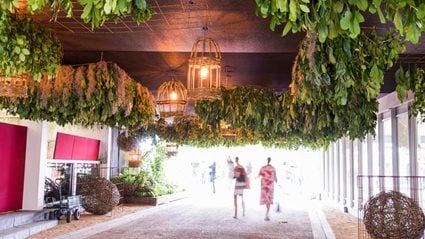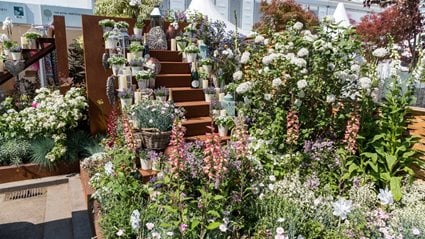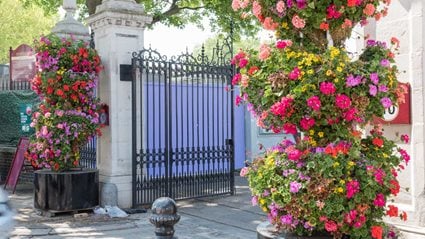Did you know...
- The two venerable, twisted larches that flank the garden's entrance are bonsai, their pots cleverly disguised with moss underplanting. Their shapes have been improved with wires
- Rocks and stones, and their exact placement in relation to each other, are among the most important aspects of Japanese gardens. The title of the oldest book on Japanese gardening translates as 'The Art of Setting Stones'
- It is easy to miss a traditional lantern, carved from red stone, behind an amazingly twisted, u-shaped pine in the front left corner of the garden
About the garden
This traditional garden is inspired by the treasured Japanese culture of ‘omotenashi’, the concept of wholehearted and sincere hospitality, and the wish to invoke this feeling in guests to the garden. The planting is based on Ikenobo, a type of Japanese flower arranging dating from the 15th century, with the placement of plants and distribution of colour carefully considered in relation to the space.The key feature of the garden is an octagonal Azumaya, or garden house, which is covered by roof material made of copper. There’s also a central pond surrounded by Japanese maples. The natural sound of water falling onto rock encourages the forgetting of time and the feeling of eternity.
All Show Gardens












prev
next
Get involved
The Royal Horticultural Society is the UK’s leading gardening charity. We aim to enrich everyone’s life through plants, and make the UK a greener and more beautiful place.

